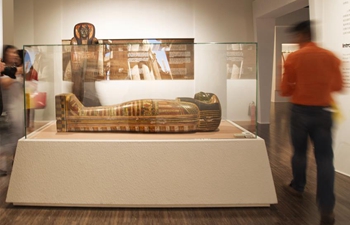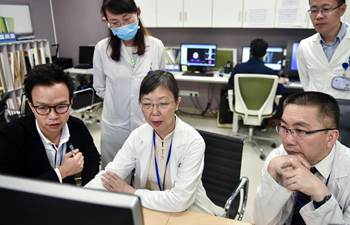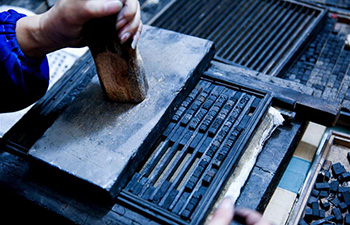SAN FRANCISCO, June 28 (Xinhua) -- A team of mechanical engineers and pathologists at the University of Washington has invented a new microscope capable of scanning tumors during surgery and examine cancer biopsies in three dimensions (3D).
When women undergo lumpectomies to remove breast cancer, doctors try to remove all the cancerous tissue while conserving as much of the healthy tissue as possible. But currently there is no reliable way to determine during surgery whether the excised tissue is completely cancer-free.
While doctors need to be confident that they removed all of the tumor, pathologists can spend several days using conventional methods to process and analyze the tissue. That is why between 20 and 40 percent of women have to undergo second, third or even fourth breast-conserving surgeries to remove cancerous cells that were missed during the initial procedure.
"Surgeons are sort of flying blind during these breast-conserving surgeries. Oftentimes they've left some tumor behind which they don't know about until a few days later when the pathologist finds it," explained mechanical engineering professor Jonathan Liu. "If we can rapidly image the entire surface or margin of the excised tissue during the procedure, we can tell them if they still have tumor left in the body or not. And that would be a huge benefit to cancer patients."
Funded by the U.S. National Institutes of Health (NIH) and the University of Washington, and detailed in a paper published in Nature Biomedical Engineering, the new microscope can rapidly and non-destructively image the margins of large fresh tissue specimens with the same level of detail as traditional pathology in no more than 30 minutes.
The open-top microscope uses a sheet of light to optically "slice" through and image a tissue sample without destroying any of it, and allows pathologists to zoom in and "see" biopsy samples in three dimensions. All of the tissue is conserved for potential downstream molecular testing, which can yield additional information about the nature of the cancer and lead to more effective treatment decisions.
"By imaging tissues in 3D without having to mount thin tissue sections on glass slides, we are trying to transform pathology much like 3-D X-ray CT has transformed radiology," Liu was quoted as saying in a news release. "While it is possible to scan microscope slides for digital pathology, we digitally image the intact tissues and bypass the need to prepare slides, which is simpler, faster and potentially less expensive."
The new microscope both image large tissue surfaces at high resolution and stitch together thousands of two-dimensional images per second to quickly create a 3D image of a surgical or biopsy specimen. That additional data could one day allow pathologists to more accurately and consistently diagnose and grade tumors.
The researchers are working on speeding up the optical-clearing process that allows light to penetrate biopsy samples more easily. And future areas of research include optimizing their 3D immunostaining processes, as well as developing algorithms that can process the vast amounts of 3D pathology data that their system generates, with the ultimate goal of helping pathologists zero in on suspicious areas of tissue.

















